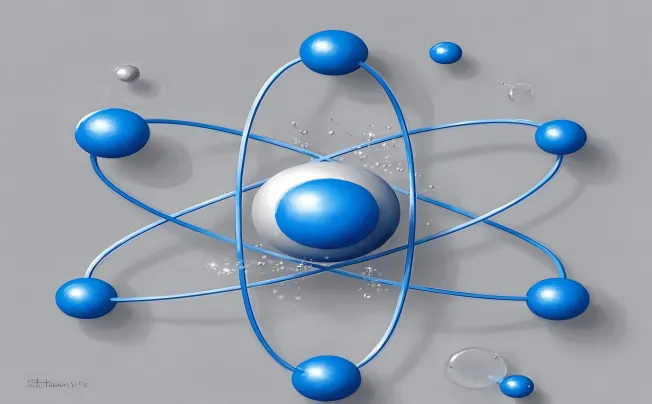Global Distribution of Manganese
Major Manganese-Producing Countries: South Africa, Australia, China, and More
Manganese is a vital mineral that plays a crucial role in various industrial applications, with the majority of global manganese production concentrated in just a few key countries. South Africa stands out as the largest producer of manganese globally, with its rich mineral reserves and well-established mining infrastructure.
The Kalahari Basin in South Africa is particularly renowned for its high-grade manganese deposits, making the country a prominent player in the global manganese market. Australia also boasts significant manganese resources, primarily located in the Groote Eylandt region.
The Australian mining industry has been pivotal in supplying high-quality manganese ore to meet both domestic and international demands. Additionally, China emerges as another major player in manganese production, leveraging its vast reserves and advanced mining technologies to maintain a substantial output of this essential metal.
Reserves and Resources of Manganese Worldwide
The global reserves of manganese are distributed across various regions worldwide, providing insights into the availability and accessibility of this critical mineral. According to geological surveys and estimates, countries such as Gabon, Ukraine, Brazil, and Ghana also hold significant manganese resources alongside the major producing nations.
These diverse reserves contribute to ensuring a stable supply chain for industries reliant on manganese. Furthermore, understanding the distribution of manganese resources on a global scale is essential for strategic planning and resource management within the mining sector.
With ongoing exploration efforts uncovering new deposits in regions like India and Kazakhstan, the world's overall reserves of this indispensable metal continue to evolve. This dynamic landscape underscores both the challenges and opportunities associated with harnessing the full potential of global manganese resources.
Mining Manganese
Manganese ore is predominantly mined utilizing two primary methods: open-pit mining and underground mining.
Open-pit mining involves the excavation of large quantities of earth to access the manganese deposits near the surface. This method is cost-effective and efficient for extracting manganese from shallow deposits but may result in significant environmental disturbances due to the removal of overlying soil and rock layers.
On the other hand, underground mining is employed when manganese ores are located at substantial depths underground. This method requires extensive tunneling and blasting to reach the ore bodies, making it a more complex and expensive process compared to open-pit mining.
Extracting Manganese Treasure
Once the manganese ore has been extracted from the earth, it undergoes a series of extraction processes to isolate and concentrate the valuable metal. Beneficiation is a crucial step in manganese processing, involving crushing, screening, gravity separation, and magnetic separation techniques to separate the ore from impurities. By selectively concentrating manganese minerals through beneficiation, higher-grade ores can be obtained for further processing into valuable products.
Exploring Pyrometallurgical and Hydrometallurgical Processes
After beneficiation, manganese ores are subjected to pyrometallurgical or hydrometallurgical processes for further refinement. Pyrometallurgical processes involve high-temperature smelting of manganese ores in furnaces to produce ferroalloys or refined metallic manganese.
On the other hand, hydrometallurgical processes rely on chemical leaching using acids or alkalis to dissolve and extract manganese from ores or concentrates. Each process has its advantages and challenges in terms of energy consumption, environmental impact, and product quality, highlighting the intricate nature of extracting this essential metal from its geological sources.
Industries Fueling the Demand for Manganese
One of the primary industries propelling the demand for manganese is steel production. Manganese is a crucial element in the manufacturing of steel due to its ability to enhance strength, hardness, and durability.
In the form of ferroalloys, such as ferromanganese and silicomanganese, manganese is added to steel during the production process to improve its physical properties. The construction, automotive, and infrastructure sectors heavily rely on manganese-infused steel, driving a consistent demand for this essential metal.
Battery manufacturing is another industry at the forefront of driving up the demand for manganese products. With the rise of electric vehicles and renewable energy storage systems, there has been a surge in the need for high-performance batteries that utilize manganese as a key component.
Manganese dioxide, specifically in the form of electrolytic manganese dioxide (EMD), is extensively used in lithium-ion batteries due to its stability and energy storage capabilities. As advancements in battery technology continue to evolve, so does the demand for manganese-based materials.
Trends Shaping Global Demand for Manganese Products
As industrialization and urbanization expand globally, so does the demand for manganese products. Developing countries are experiencing rapid growth in infrastructure development and urban expansion, leading to an increased need for steel reinforced with manganese.
Moreover, with ongoing efforts towards sustainable energy solutions, there has been a notable shift towards electric vehicles powered by batteries containing significant amounts of manganese. The trend towards green technologies and renewable energy sources further amplifies the global demand for manganese products.
Solar panels and wind turbines require durable materials that can withstand harsh environmental conditions over extended periods—manganese plays a pivotal role in enhancing these components' longevity and performance. As governments worldwide prioritize reducing carbon emissions and transitioning towards cleaner energy sources, the demand for manganese to support these initiatives continues to grow steadily.
Recycling and Sustainability Efforts
The Importance of Recycling Manganese Products
Manganese is a crucial element in various industries, particularly in steel production and battery manufacturing. Given its essential role, recycling manganese products becomes paramount in ensuring a sustainable supply chain.
By recycling manganese-containing materials such as steel scrap and batteries, we can reduce the reliance on primary mining operations, conserve natural resources, and decrease the environmental impacts associated with mining activities. Moreover, recycling manganese helps to lower energy consumption and greenhouse gas emissions, contributing to a more environmentally friendly production process.
Sustainable Practices in the Manganese Industry
To promote sustainability within the manganese industry, companies are implementing various practices aimed at reducing their environmental footprint. One such initiative is optimizing resource utilization through technological advancements in extraction processes. By improving efficiency and minimizing waste during mining and processing operations, the industry can operate more sustainably while preserving natural ecosystems.
Additionally, initiatives focused on reclamation and restoration of mined areas help mitigate habitat disruption and promote biodiversity conservation.








